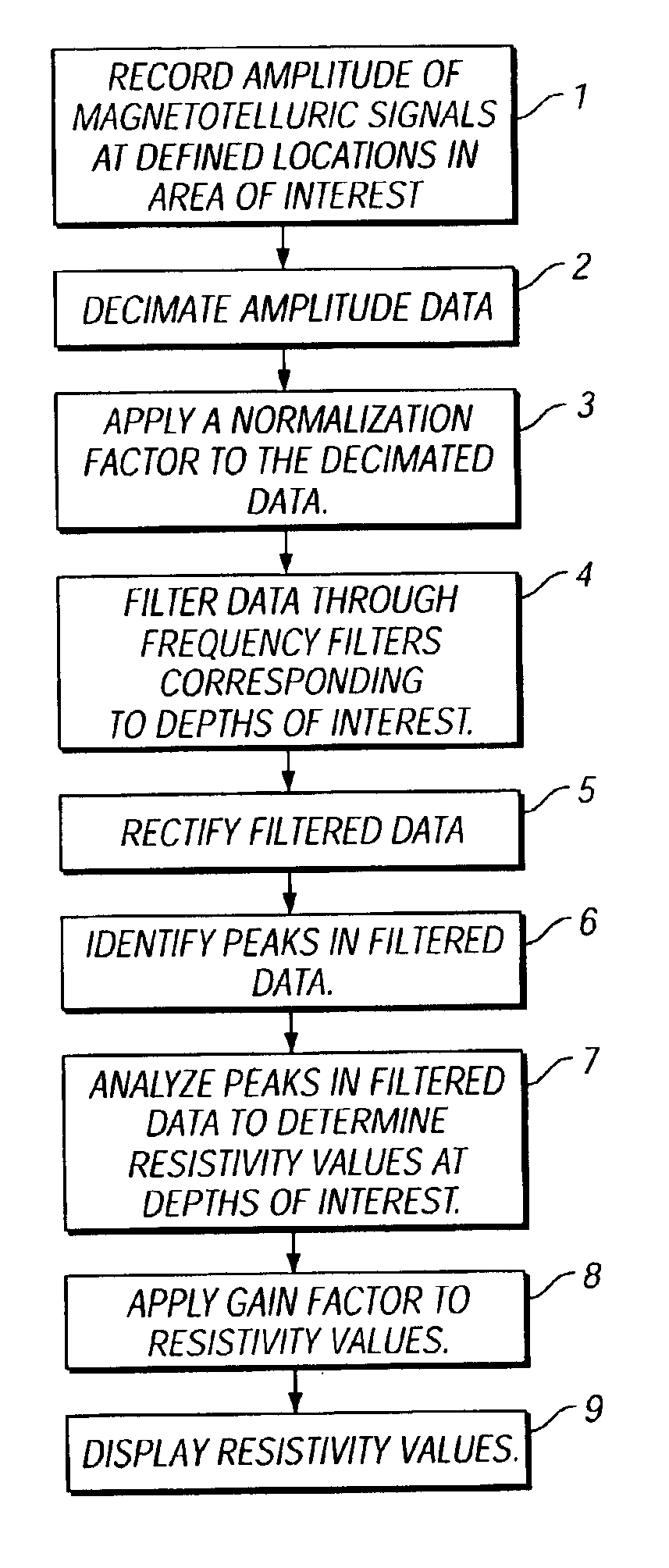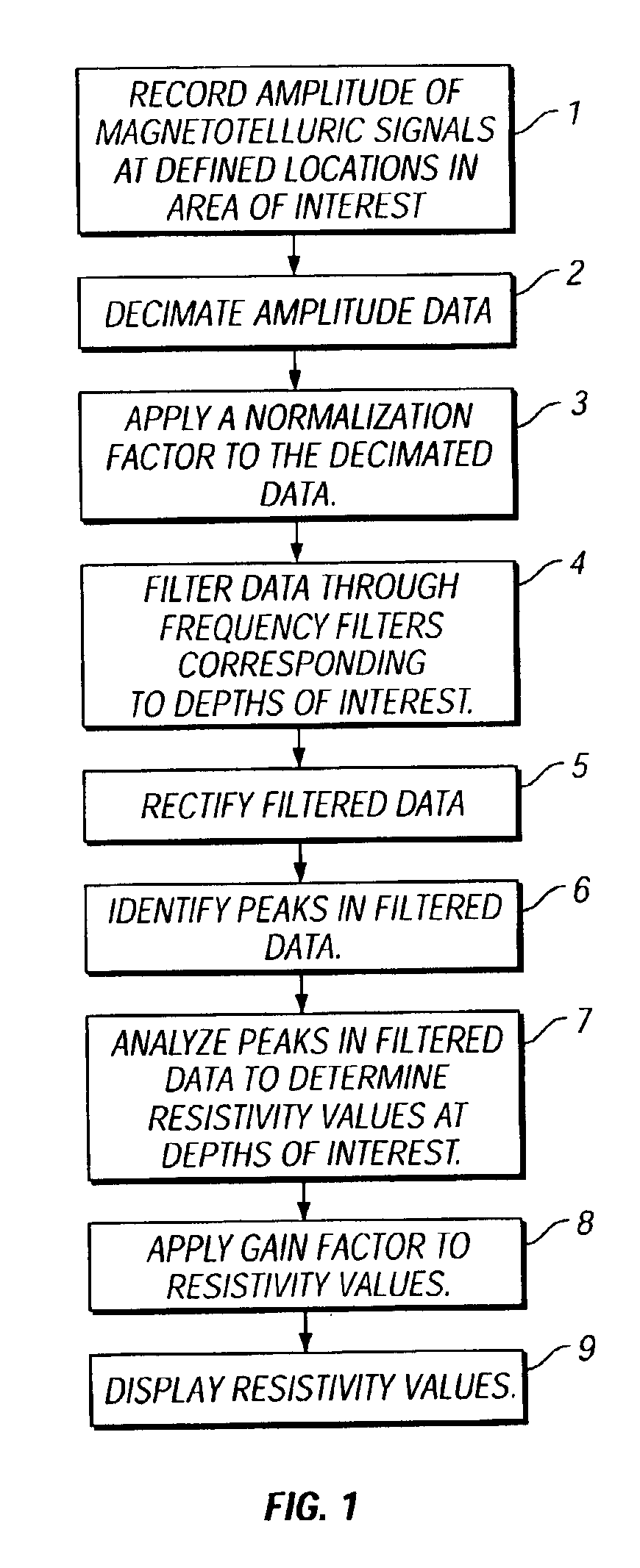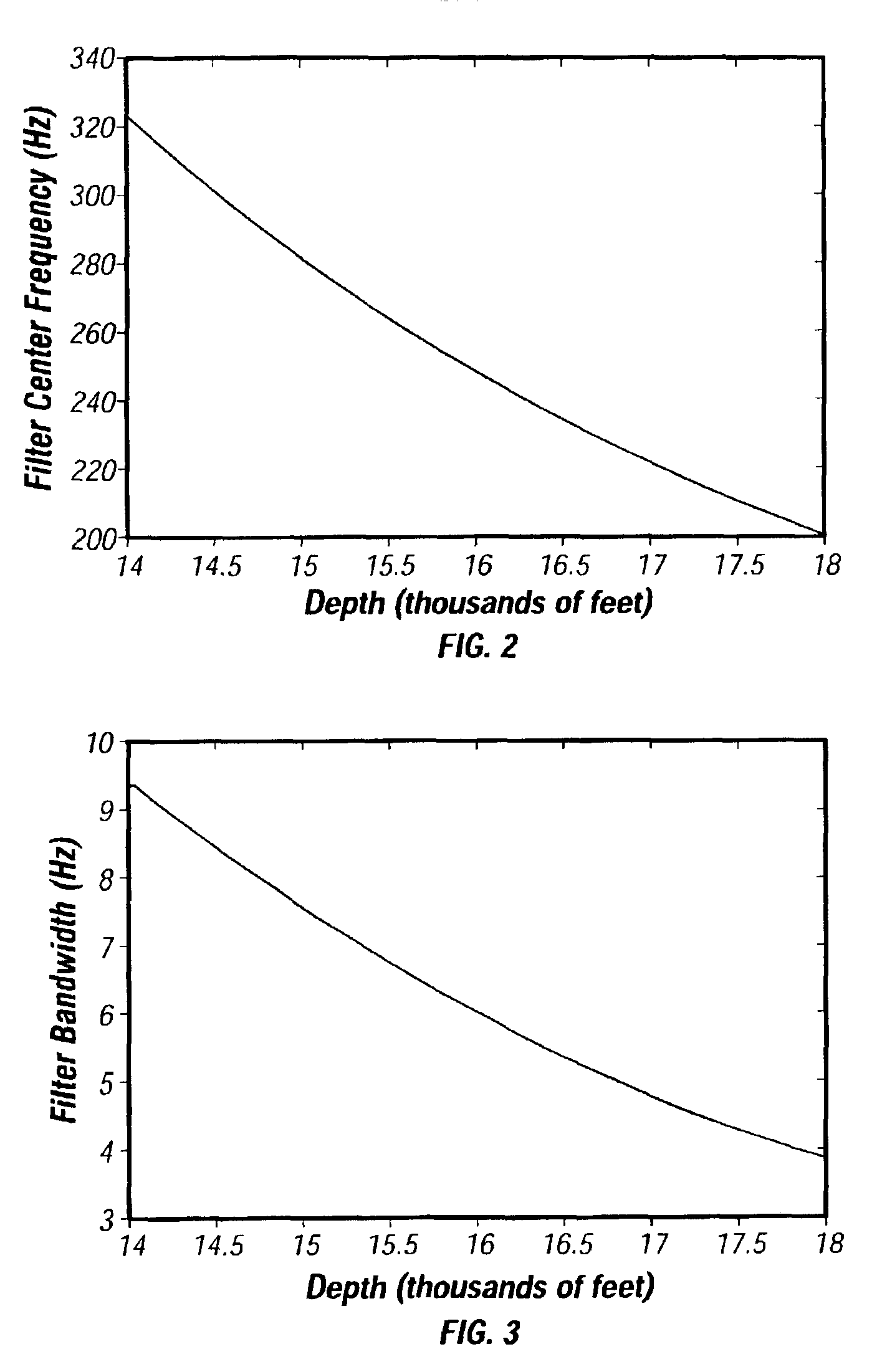Methods of processing magnetotelluric signals
a magnetotelluric signal and processing method technology, applied in the field of magnetotelluric surveys, can solve the problems of not being able to explore unknown and unproven areas in practical options, unable and not being able to achieve seismic survey results. , to achieve the effect of improving the signal to noise ratio, enhancing the display of data, and facilitating interpretation
- Summary
- Abstract
- Description
- Claims
- Application Information
AI Technical Summary
Benefits of technology
Problems solved by technology
Method used
Image
Examples
example 1
[0082]A magnetotelluric survey was conducted in a known oil and gas producing field in southern Louisiana, United States of America. The data was recorded and digitally stored with using a high gain audio amplifier and a laptop computer utilizing a DSP acquisition system, all of which are commercially available and typical of the equipment that may be used in gathering and processing magnetotelluric data. Data was collected at approximately 32 locations over an area of approximately a quarter of a mile. The data was sampled at a rate of 32,786 Hz. The sampling period was 29 seconds. The range of depth investigated was from 14,000 to 18,000 feet at a resolution of 40 feet.
[0083]The raw amplitude data collected at the first survey location over the first 120 msec of the 29 second sampling period is shown in FIG. 6. The amplitude data then was decimated by a factor of 4. A printout of the data shown in FIG. 6, after decimation, is shown in FIG. 7.
[0084]The decimated data then was norma...
PUM
 Login to View More
Login to View More Abstract
Description
Claims
Application Information
 Login to View More
Login to View More - R&D
- Intellectual Property
- Life Sciences
- Materials
- Tech Scout
- Unparalleled Data Quality
- Higher Quality Content
- 60% Fewer Hallucinations
Browse by: Latest US Patents, China's latest patents, Technical Efficacy Thesaurus, Application Domain, Technology Topic, Popular Technical Reports.
© 2025 PatSnap. All rights reserved.Legal|Privacy policy|Modern Slavery Act Transparency Statement|Sitemap|About US| Contact US: help@patsnap.com



